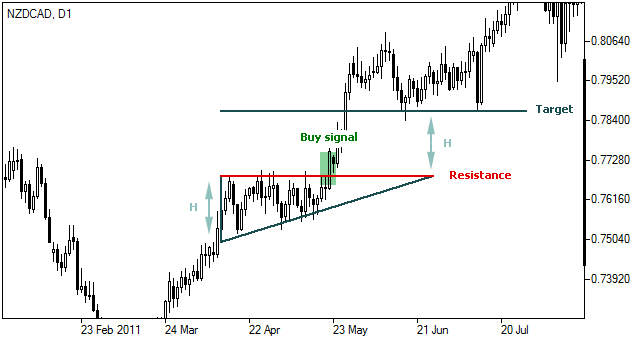Precision in Placement: Strategies to Minimize Installation Errors
Achieving precision in placement is crucial for various industries, from construction to manufacturing. In this blog post, we’ll delve into effective strategies for minimizing installation errors and ensuring accurate placement across diverse operational contexts.
The Significance of Precision in Placement
The accurate positioning of components, equipment, and structures underpins the integrity and functionality of myriad industrial processes. Whether in the context of architectural installations, machinery assembly, or infrastructure development, the significance of precision in placement cannot be overstated. Even minor installation errors can lead to costly rework, compromised safety, and operational inefficiencies, highlighting the imperative for meticulous attention to placement accuracy.
Leveraging Digital Modeling and Simulation
Digital modeling and simulation technologies offer valuable tools for validating installation plans, identifying potential clashes, and optimizing spatial arrangements prior to physical implementation. By simulating the placement of components within a virtual environment, stakeholders can anticipate challenges, refine design specifications, and mitigate the risk of errors arising from inadequate spatial planning.
Integrating Precision Instruments
Another effective approach involves the integration of precision measuring instruments within the installation process. Tools such as laser scanners, GPS systems, and robotic total stations have revolutionized the way installations are performed by providing real-time, high-fidelity data critical for ensuring placement accuracy. These advanced instruments enable operators to execute installations with a level of precision that was previously unattainable, dramatically reducing the margin for error and enhancing the overall quality of the project.
Implementing Robust Measurement Protocols
The implementation of robust measurement protocols is foundational to achieving precise placement in diverse operational settings. Utilizing advanced measurement tools, laser alignment systems, and coordinate measuring machines enables operators to verify dimensional accuracy, assess alignment parameters, and ensure that installation specifications conform to exacting tolerances, thereby mitigating the risk of placement deviations.
Incorporating Submersible Pressure Transducers for Underwater Installations
In underwater installations, such as those involved in marine engineering and offshore energy production, the use of submersible pressure transducers is integral to achieving precision. These devices are engineered to operate in challenging sub-aquatic conditions, where accurate measurement of pressure differentials is critical. They offer real-time data feedback, which is essential for confirming the correct positioning of structures or components at specific depths.
With their robust design and precision sensors, submersible pressure transducers enable the installation team to make minute adjustments, ensuring that each element is placed correctly according to the project’s specifications, thereby reducing the risk of installation inaccuracies in underwater environments.
Adhering to Stringent Quality Control Procedures
Stringent quality control procedures are instrumental in safeguarding against installation errors and ensuring the conformity of placement activities to predefined standards. From comprehensive inspection routines to non-destructive testing methodologies, rigorous quality control measures enable organizations to detect anomalies, identify discrepancies, and rectify placement deviations before they escalate into critical issues with far-reaching ramifications.
Embracing Automated Positioning Technologies
The integration of automated positioning technologies, such as robotic guidance systems and computer numerical control (CNC) machinery, streamlines installation processes and minimizes the potential for human error. By automating intricate positioning tasks, organizations can achieve unparalleled placement precision, enhance operational efficiency, and reduce the likelihood of errors associated with manual intervention.
Fostering Cross-Disciplinary Collaboration
Achieving precision in placement necessitates seamless collaboration between multidisciplinary teams, encompassing architects, engineers, contractors, and installation specialists. By fostering open communication channels, soliciting diverse perspectives, and encouraging interdisciplinary cooperation, organizations can leverage collective expertise to address installation challenges, optimize placement strategies, and proactively mitigate the risk of errors arising from siloed decision-making.
Prioritizing Training and Skill Development
Prioritizing training initiatives and skill development programs is essential for cultivating a workforce equipped with the technical acumen and proficiency required to execute precise placement tasks. By imparting specialized training in spatial awareness, equipment operation, and installation best practices, organizations empower personnel to uphold meticulous standards of placement accuracy, thereby fortifying resilience against errors stemming from human factors.
Minimizing installation errors and achieving precision in placement demands a holistic approach that integrates advanced technologies, stringent quality control, interdisciplinary collaboration, and continuous skill development. By leveraging digital modeling, implementing robust measurement protocols, embracing automated positioning technologies, and prioritizing cross-disciplinary collaboration, organizations can fortify their capacity to execute placement tasks with unparalleled accuracy, thereby elevating operational efficiency, mitigating rework costs, and upholding the integrity of industrial installations across diverse domains.

Shahid Maqsood, an MBA and Master in Mass Communications, is a seasoned writer with over a decade of experience. Specializing in news and celebrity coverage, he brings a unique perspective from his love for hunting and camping. His work spans multiple platforms like dosttrusty.com and newsbreak.com,Quellpress.com , airriflehunting, and bruitly.com showcasing his versatility and depth. Shahid’s insightful articles reflect his expertise, authoritativeness, and trustworthiness, making him a respected and reliable voice in digital content creation. His contributions engage and inform readers, embodying professionalism and passion in every piece.







